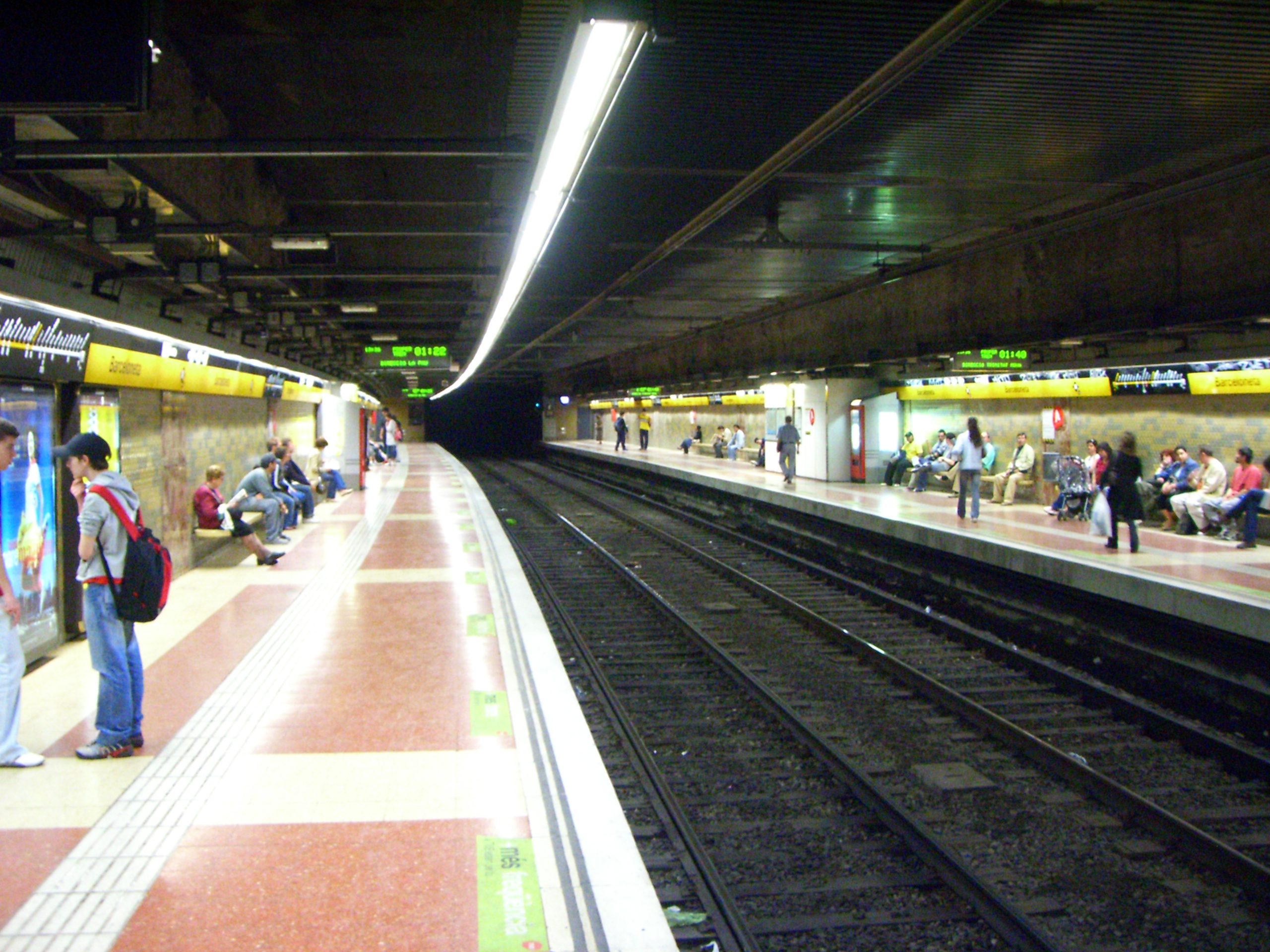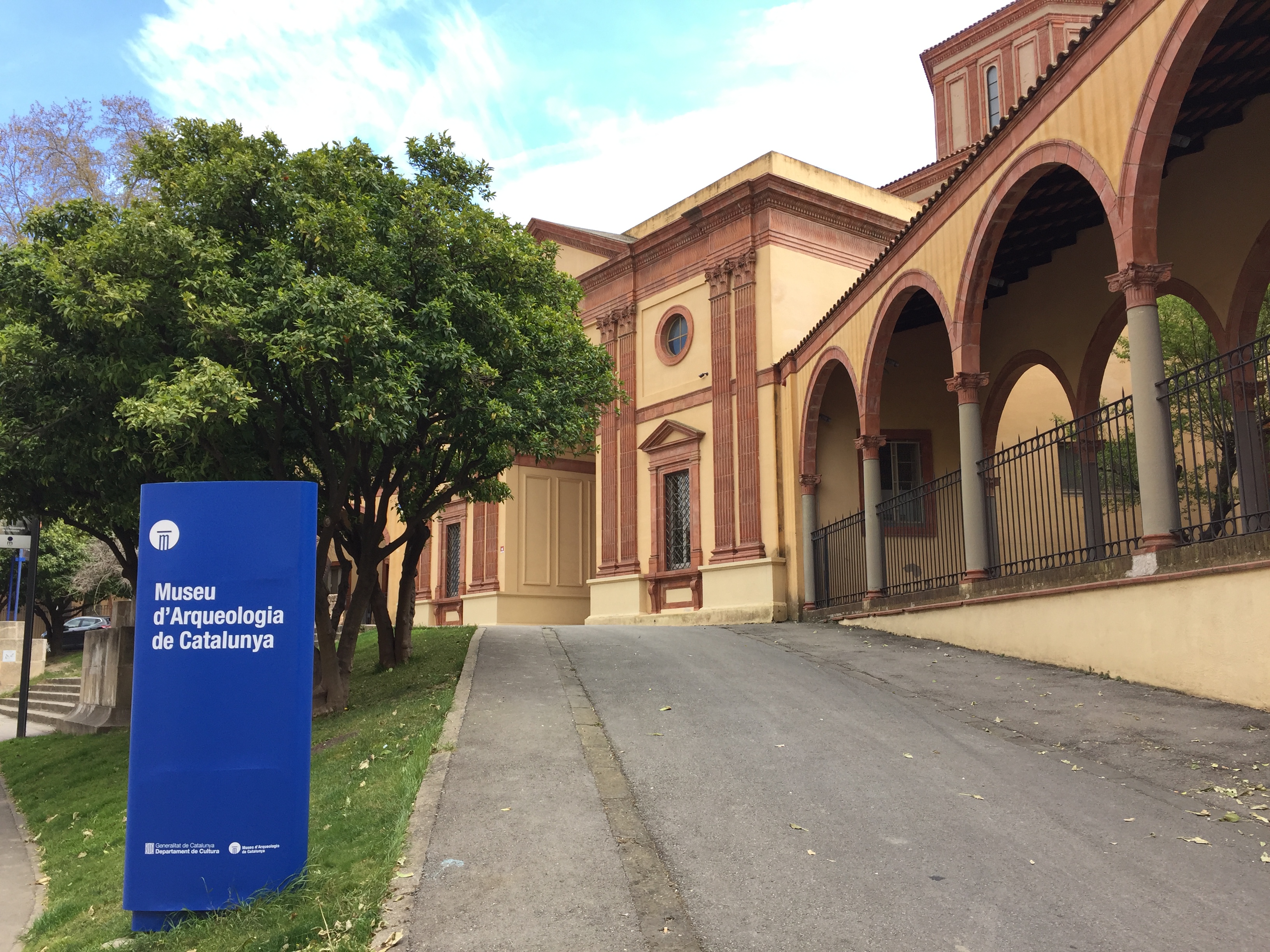|
Museu D'Història De Catalunya
The Museum of the History of Catalonia ( ca, Museu d'Història de Catalunya, MHC) is a history museum in Barcelona that promotes the awareness and knowledge of the history of Catalonia and its culture. The museum is located in Barcelona's Palau de Mar, the former General Stores (''Magatzems Generals de Comerç''), the sole building of Barcelona's old industrial port still standing. Exhibitions The permanent exhibition "The memory of a country" consists of a journey through the history of Catalonia from prehistoric to modern times, documenting the main events, cultures and historic personalities that made up the history of Catalonia. It is divided on 8 historical periods. Temporary exhibitions include: "Fashion and fashion designers" (until 13 October 2019) and "Beyond the trenches (1936-1939). Photographies by Alec Wainman" (until 3 November 2019). The museum website offers free of charge online audio guides for the exhibitions in different languages: Catalan, Spanish, Eng ... [...More Info...] [...Related Items...] OR: [Wikipedia] [Google] [Baidu] |
Barcelona
Barcelona ( , , ) is a city on the coast of northeastern Spain. It is the capital and largest city of the autonomous community of Catalonia, as well as the second most populous municipality of Spain. With a population of 1.6 million within city limits,Barcelona: Población por municipios y sexo – Instituto Nacional de Estadística. (National Statistics Institute) its urban area extends to numerous neighbouring municipalities within the and is home to around 4.8 million people, making it the [...More Info...] [...Related Items...] OR: [Wikipedia] [Google] [Baidu] |
History Museum
A museum ( ; plural museums or, rarely, musea) is a building or institution that cares for and displays a collection of artifacts and other objects of artistic, cultural, historical, or scientific importance. Many public museums make these items available for public viewing through exhibits that may be permanent or temporary. The largest museums are located in major cities throughout the world, while thousands of local museums exist in smaller cities, towns, and rural areas. Museums have varying aims, ranging from the conservation and documentation of their collection, serving researchers and specialists, to catering to the general public. The goal of serving researchers is not only scientific, but intended to serve the general public. There are many types of museums, including art museums, natural history museums, science museums, war museums, and children's museums. According to the International Council of Museums (ICOM), there are more than 55,000 museums in 202 countries ... [...More Info...] [...Related Items...] OR: [Wikipedia] [Google] [Baidu] |
Generalitat De Catalunya
The Generalitat de Catalunya (; oc, label=Aranese, Generalitat de Catalonha; es, Generalidad de Cataluña), or the Government of Catalonia, is the institutional system by which Catalonia politically organizes its self-government. It is formed by the Parliament of Catalonia, the Presidency of the Generalitat de Catalunya, and the Executive Council of Catalonia (also very often referred to as ''Govern'', "Government"). Its origins are in the 13th century when permanent councils of deputies (deputations) were created to rule administration of the Courts of the different realms that formed the Crown of Aragon which gave birth to the Deputation of the General of the Principality of Catalonia (1359), the Deputation of the General of the Kingdom of Aragon (1362) and the Deputation of the General of the Kingdom of Valencia (1412). The modern Generalitat was established in 1931, as the institution of self-government of Catalonia within the Spanish Republic. Remaining in exile after the ... [...More Info...] [...Related Items...] OR: [Wikipedia] [Google] [Baidu] |
Barceloneta (Barcelona Metro)
Barceloneta () is a station belonging to line L4 of Barcelona Metro. It is located in La Barceloneta neighbourhood, close to the beach and Parc de la Ciutadella. This is the station nearest to Barcelona França railway station, one of the city's major railway stations and one of the R2 commuter line stops. The station is the least deep underground metro station in the whole system. History Barceloneta metro station started being built in in order to service the neighbourhood of La Barceloneta, and replacing the old station of Correos (currently abandoned, located between Jaume I James I the Conqueror ( es, Jaime el Conquistador, ca, Jaume el Conqueridor; 2 February 1208 – 27 July 1276) was King of Aragon and Lord of Montpellier from 1213 to 1276; King of Majorca from 1231 to 1276; and Valencia from 1238 to 127 ... and Barceloneta). Construction was slow due to problems, including the explosion which occurred in November 1973. Finally, the station opened on 15 ... [...More Info...] [...Related Items...] OR: [Wikipedia] [Google] [Baidu] |
History Museum
A museum ( ; plural museums or, rarely, musea) is a building or institution that cares for and displays a collection of artifacts and other objects of artistic, cultural, historical, or scientific importance. Many public museums make these items available for public viewing through exhibits that may be permanent or temporary. The largest museums are located in major cities throughout the world, while thousands of local museums exist in smaller cities, towns, and rural areas. Museums have varying aims, ranging from the conservation and documentation of their collection, serving researchers and specialists, to catering to the general public. The goal of serving researchers is not only scientific, but intended to serve the general public. There are many types of museums, including art museums, natural history museums, science museums, war museums, and children's museums. According to the International Council of Museums (ICOM), there are more than 55,000 museums in 202 countries ... [...More Info...] [...Related Items...] OR: [Wikipedia] [Google] [Baidu] |
History Of Catalonia
Catalonia was first settled during the Middle Palaeolithic era. Like the rest of the Mediterranean side of the Iberian Peninsula, the area was occupied by the Iberians and several Greek colonies were established on the coast before the Roman conquest. It was the first area of Hispania conquered by the Romans. It then came under Visigothic rule after the collapse of the western part of the Roman Empire. In 718, the area was occupied by the Umayyad Caliphate and became a part of Muslim ruled al-Andalus. The Frankish Empire conquered the area from the Muslims, ending with the conquest of Barcelona in 801, as part of the creation of a larger buffer zone of Christian counties against Islamic rule historiographically known as the Marca Hispanica. In the 10th century the County of Barcelona became progressively independent from Frankish rule. In 1137, Ramon Berenguer IV, Count of Barcelona betrothed the heiress of the Kingdom of Aragon, Petronilla, establishing the dynastic union ... [...More Info...] [...Related Items...] OR: [Wikipedia] [Google] [Baidu] |
Port Of Barcelona
Managed by Spanish Government The Port of Barcelona ( ca, Port de Barcelona, ; es, Puerto de Barcelona) has a 150-year history and great contemporary commercial importance as one of Europe's major ports in the Mediterranean. It is also Spain's third and Europe's ninth largest container port, with a trade volume of 3.42 million TEUs in 2018. The port is managed by the Port Authority of Barcelona. Its are divided into three zones: Port Vell (the Old Port), the commercial/industrial port, and the logistics port (Barcelona Free Port). This is not the only port in Barcelona, as there are also two additional yacht harbors/marinas: Port Olímpic and Port Fòrum Sant Adrià to the north. Overview The Port Vell area comprises two marinas or yacht harbors, a fishing port, a maritime station for ferries travelling to the Balearic Islands and other destinations in the Mediterranean and other stations or landing areas cruise ships, and it abuts the industrial port. In the central area, it ... [...More Info...] [...Related Items...] OR: [Wikipedia] [Google] [Baidu] |
History Of Catalonia
Catalonia was first settled during the Middle Palaeolithic era. Like the rest of the Mediterranean side of the Iberian Peninsula, the area was occupied by the Iberians and several Greek colonies were established on the coast before the Roman conquest. It was the first area of Hispania conquered by the Romans. It then came under Visigothic rule after the collapse of the western part of the Roman Empire. In 718, the area was occupied by the Umayyad Caliphate and became a part of Muslim ruled al-Andalus. The Frankish Empire conquered the area from the Muslims, ending with the conquest of Barcelona in 801, as part of the creation of a larger buffer zone of Christian counties against Islamic rule historiographically known as the Marca Hispanica. In the 10th century the County of Barcelona became progressively independent from Frankish rule. In 1137, Ramon Berenguer IV, Count of Barcelona betrothed the heiress of the Kingdom of Aragon, Petronilla, establishing the dynastic union ... [...More Info...] [...Related Items...] OR: [Wikipedia] [Google] [Baidu] |
History Museums In Catalonia
History (derived ) is the systematic study and the documentation of the human activity. The time period of event before the invention of writing systems is considered prehistory. "History" is an umbrella term comprising past events as well as the memory, discovery, collection, organization, presentation, and interpretation of these events. Historians seek knowledge of the past using historical sources such as written documents, oral accounts, art and material artifacts, and ecological markers. History is not complete and still has debatable mysteries. History is also an academic discipline which uses narrative to describe, examine, question, and analyze past events, and investigate their patterns of cause and effect. Historians often debate which narrative best explains an event, as well as the significance of different causes and effects. Historians also debate the nature of history as an end in itself, as well as its usefulness to give perspective on the problems of the p ... [...More Info...] [...Related Items...] OR: [Wikipedia] [Google] [Baidu] |
Museums In Barcelona
This is a list of museums in Barcelona, the capital city of Catalonia, Spain. Defunct museums * Museu Barbier-Mueller d'Art Precolombí *Museu Clarà *Museu d'Art Modern *Museu de la Ciència de Barcelona *Museu de la Moto *Museu del Calçat *Museu del Clavegueram *Museu del Còmic i la Il·lustració (closed 2009) *Museu del Gabinet Numismàtic de Catalunya *Museu d'Idees i Invents *Museu del Mamut *Museu del Rock *Museu Fundació Francisco Godia *Museu Militar de Barcelona (closed May 2009) *Museu Municipal de Belles Arts *Museu Pedagògic Experimental *Museu Provincial d'Antiguitats *Museu Social *Palau Reial de Pedralbes (closed 2013) ** (now part of the Design Museum of Barcelona) ** Museu de les Arts Decoratives (now part of the Design Museum of Barcelona) **Museu Tèxtil i d'Indumentària (now part of the Design Museum of Barcelona) ** Gabinet de les Arts Gràfiques (now part of the Design Museum of Barcelona) *Blueproject Foundation See also * List of libraries in ... [...More Info...] [...Related Items...] OR: [Wikipedia] [Google] [Baidu] |





.jpg)
